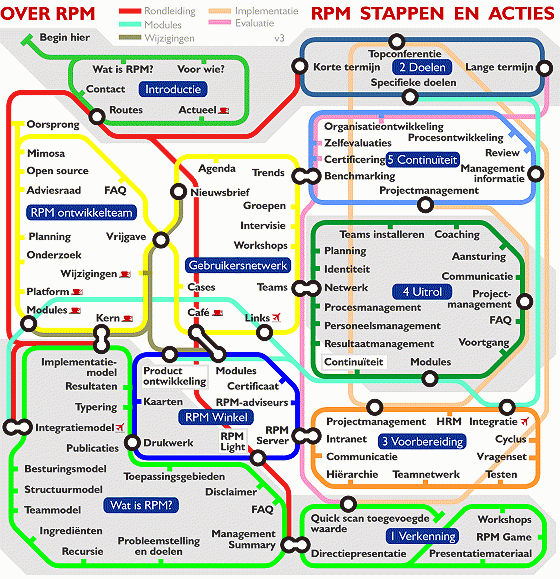Peter A.J. Bootsma and Jan van Bon in: The guide to IT Service Management, volume 1; J. van Bon (ed.), Addison Wesley, 2002.
 Scalable process models can be difficult to implement. Many currently popular IT Service Management concepts specify which processes are needed for good service management. These concepts may range from limited checklists for process structures to comprehensive total management concepts. Examples are HP’s IT Service Management Reference Model, IBM’s IT Process Model and several models recently published for the IT Service Management community, such as R2C, IPW, IIM, SIMA and ISM (IT Service Management Yearbook, 1999). A useful characteristic of these IT Service Management concepts is scalability. Scalable process models are designed for organizations ranging from very small to very large. For instance: in the IPW model an IT service provider is expected to explicitly organize incident management and problem management, no matter how many or how few people are involved. From the process point of view, scalability is a natural characteristic. It is much like a recipe: no matter how much beer you brew, the recipe and brewing conditions remain the same. When it comes to implementation, however, the number of people involved and services delivered becomes important. It will determine how detailed procedures are written, how many layers of management are needed, how formal or informal communications will be, to what extent standardization is required, etc. In addition to this, at implementation time other management areas and aspects get involved, such as planning and control, HR management, communication and the company culture. Here too, size makes a difference: large organizations behave differently from smaller ones. Also, the project-wise implementation of a process model can be very different between large and small organizations. Scalable process models, therefore, cannot be installed ‘off the shelf’. Scalability makes for applicability but, when it comes to implementation, leaves many ‘how-to’ questions unanswered. For instance: how to choose between multifunctional process teams and functional departments? This chapter discusses an implementation strategy that reduces the gap between model and practice while remaining generic. This is achieved through joint application of a process model specific to IT Service Management (Integrated Service Management or ISM) and a generic model for self-directed work teams (Recursive Process Management or RPM). Both models are explained briefly, followed by a stepwise account of implementation issues.
Scalable process models can be difficult to implement. Many currently popular IT Service Management concepts specify which processes are needed for good service management. These concepts may range from limited checklists for process structures to comprehensive total management concepts. Examples are HP’s IT Service Management Reference Model, IBM’s IT Process Model and several models recently published for the IT Service Management community, such as R2C, IPW, IIM, SIMA and ISM (IT Service Management Yearbook, 1999). A useful characteristic of these IT Service Management concepts is scalability. Scalable process models are designed for organizations ranging from very small to very large. For instance: in the IPW model an IT service provider is expected to explicitly organize incident management and problem management, no matter how many or how few people are involved. From the process point of view, scalability is a natural characteristic. It is much like a recipe: no matter how much beer you brew, the recipe and brewing conditions remain the same. When it comes to implementation, however, the number of people involved and services delivered becomes important. It will determine how detailed procedures are written, how many layers of management are needed, how formal or informal communications will be, to what extent standardization is required, etc. In addition to this, at implementation time other management areas and aspects get involved, such as planning and control, HR management, communication and the company culture. Here too, size makes a difference: large organizations behave differently from smaller ones. Also, the project-wise implementation of a process model can be very different between large and small organizations. Scalable process models, therefore, cannot be installed ‘off the shelf’. Scalability makes for applicability but, when it comes to implementation, leaves many ‘how-to’ questions unanswered. For instance: how to choose between multifunctional process teams and functional departments? This chapter discusses an implementation strategy that reduces the gap between model and practice while remaining generic. This is achieved through joint application of a process model specific to IT Service Management (Integrated Service Management or ISM) and a generic model for self-directed work teams (Recursive Process Management or RPM). Both models are explained briefly, followed by a stepwise account of implementation issues.
